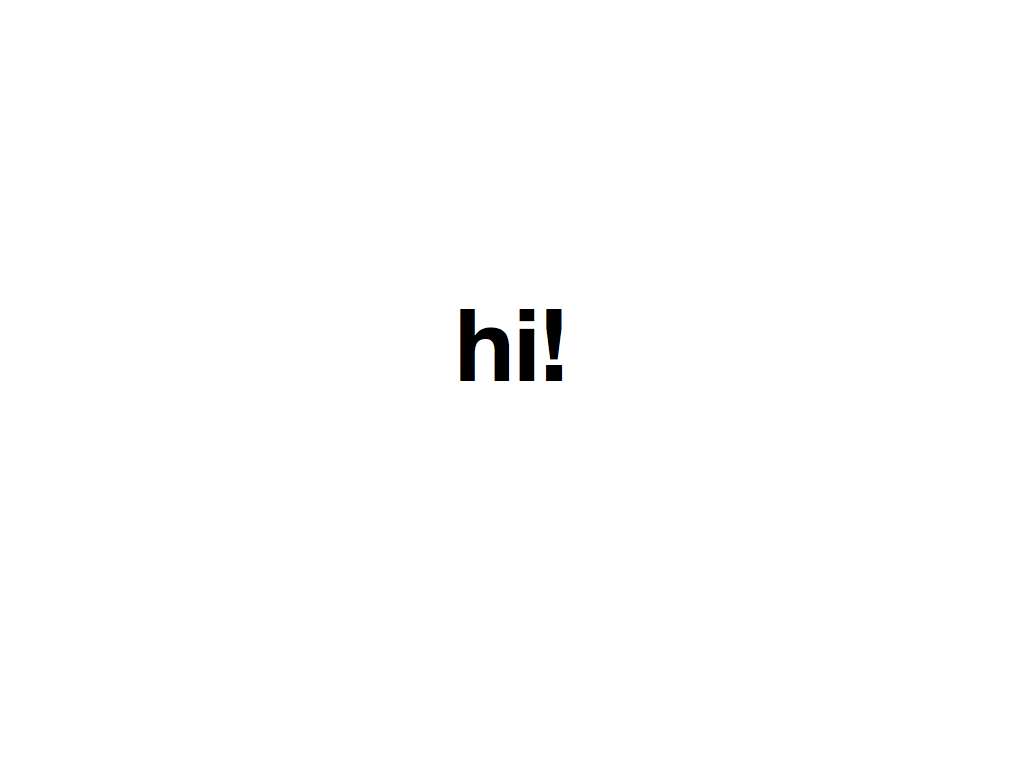
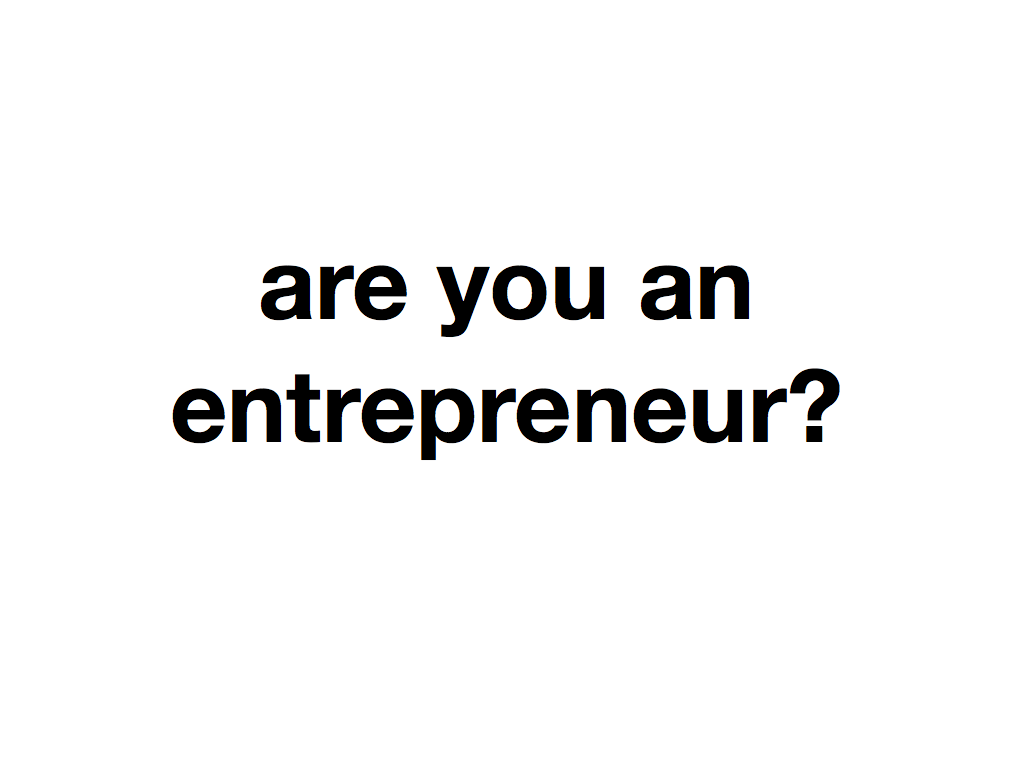
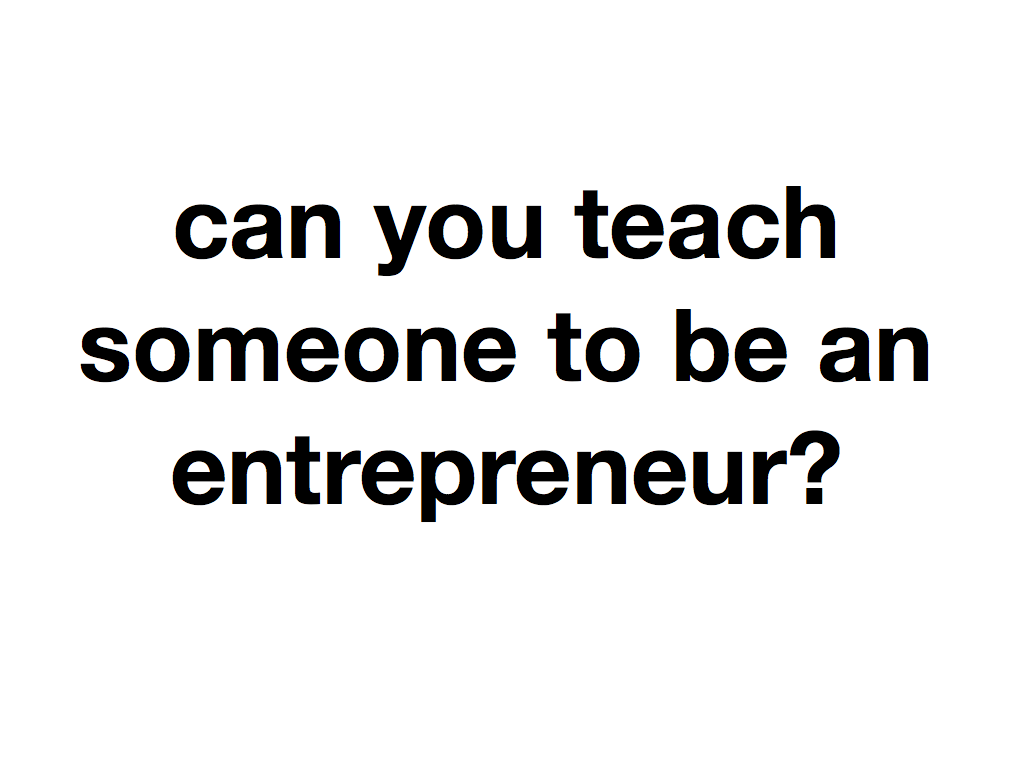
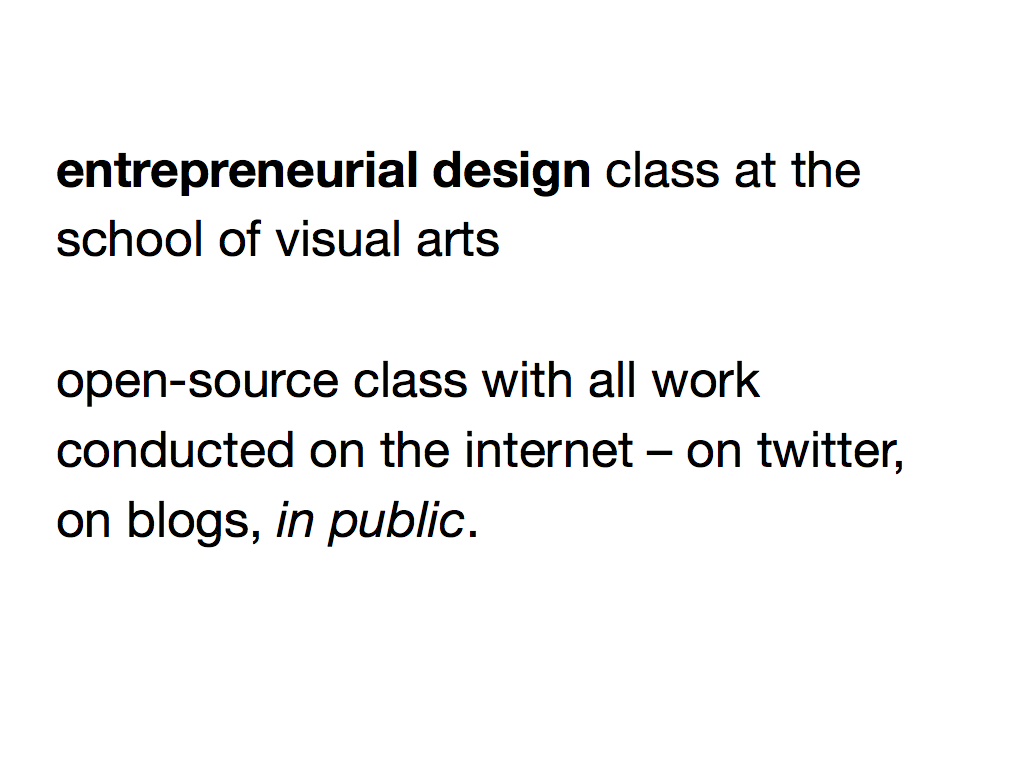
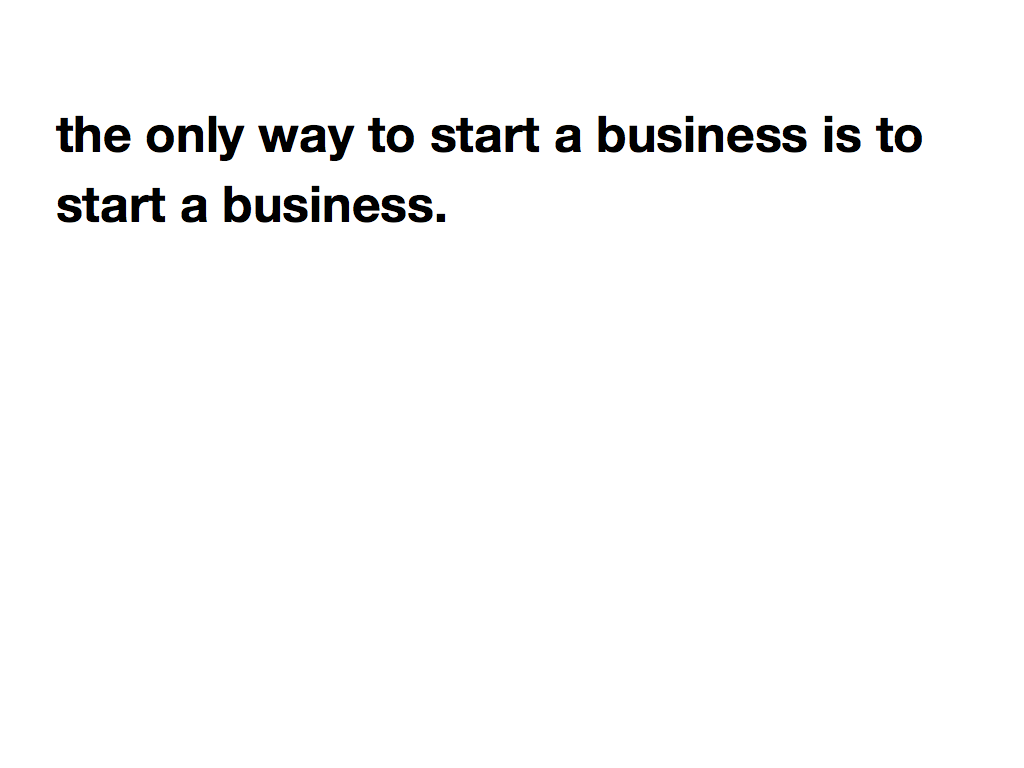
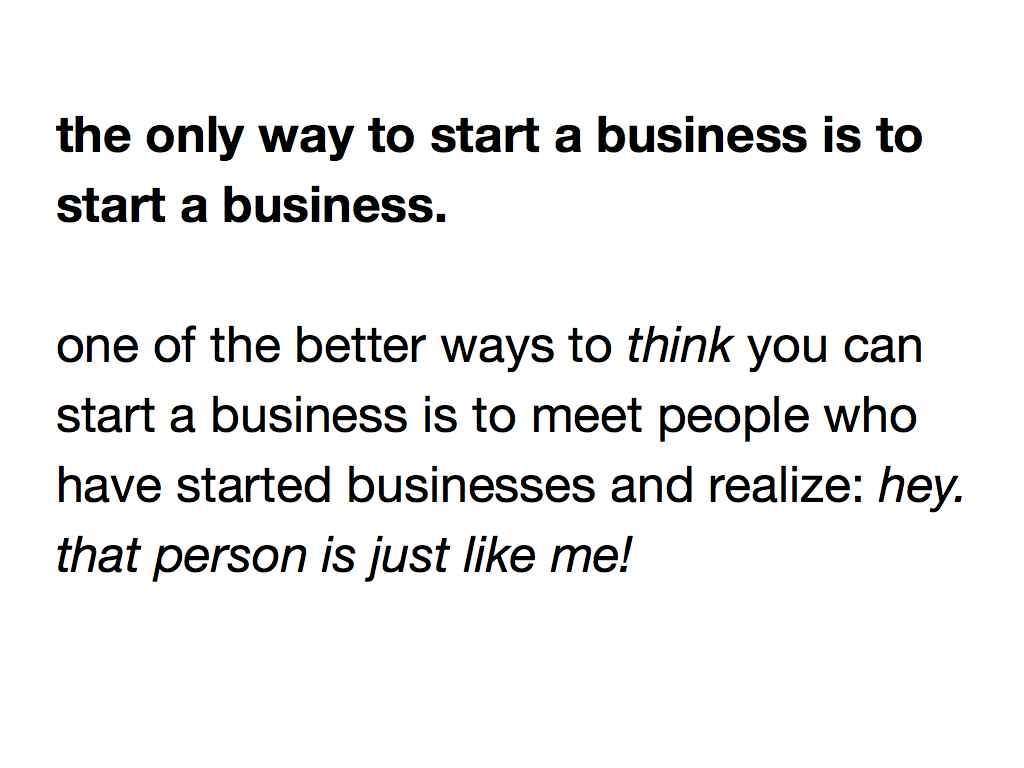
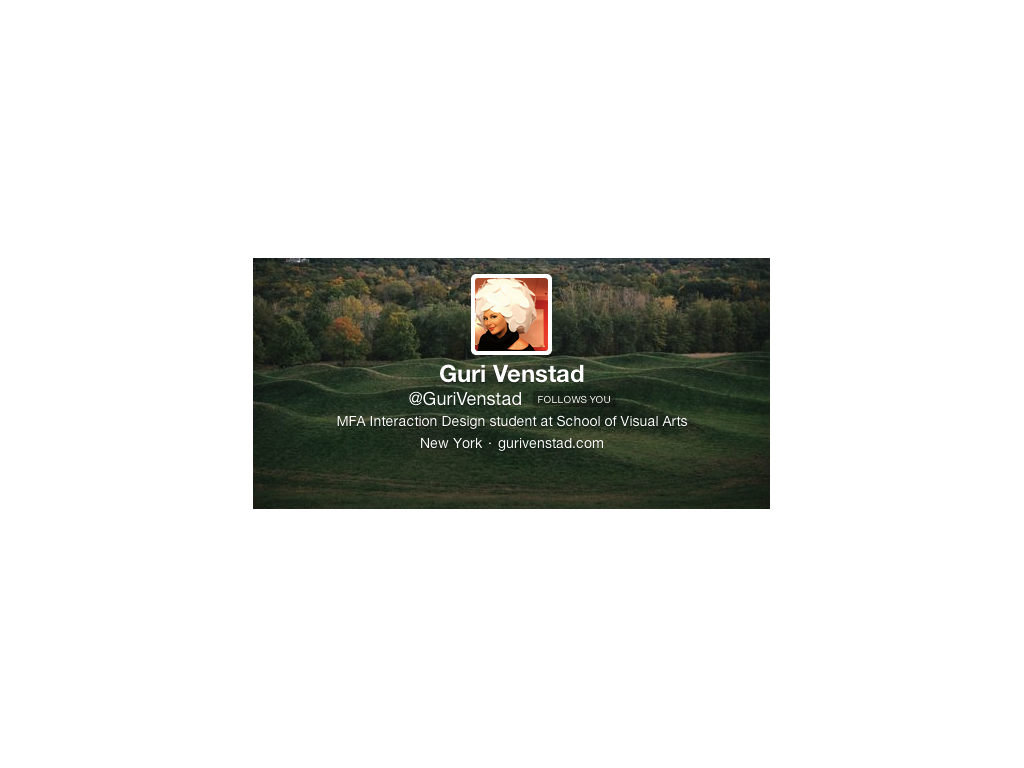
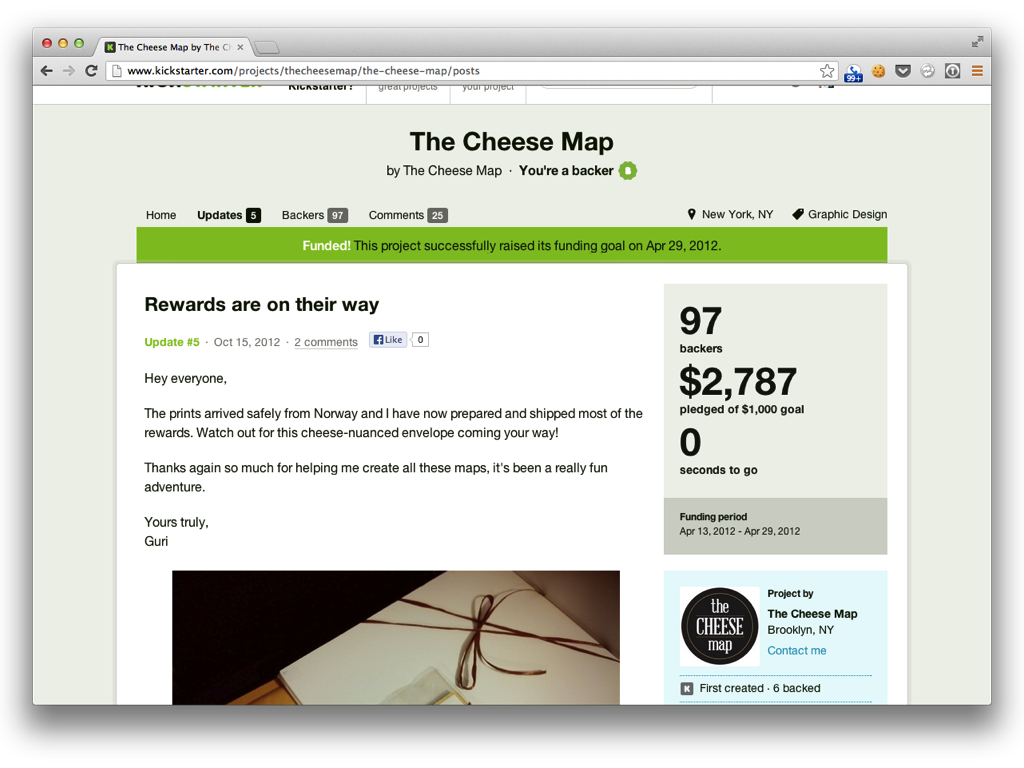
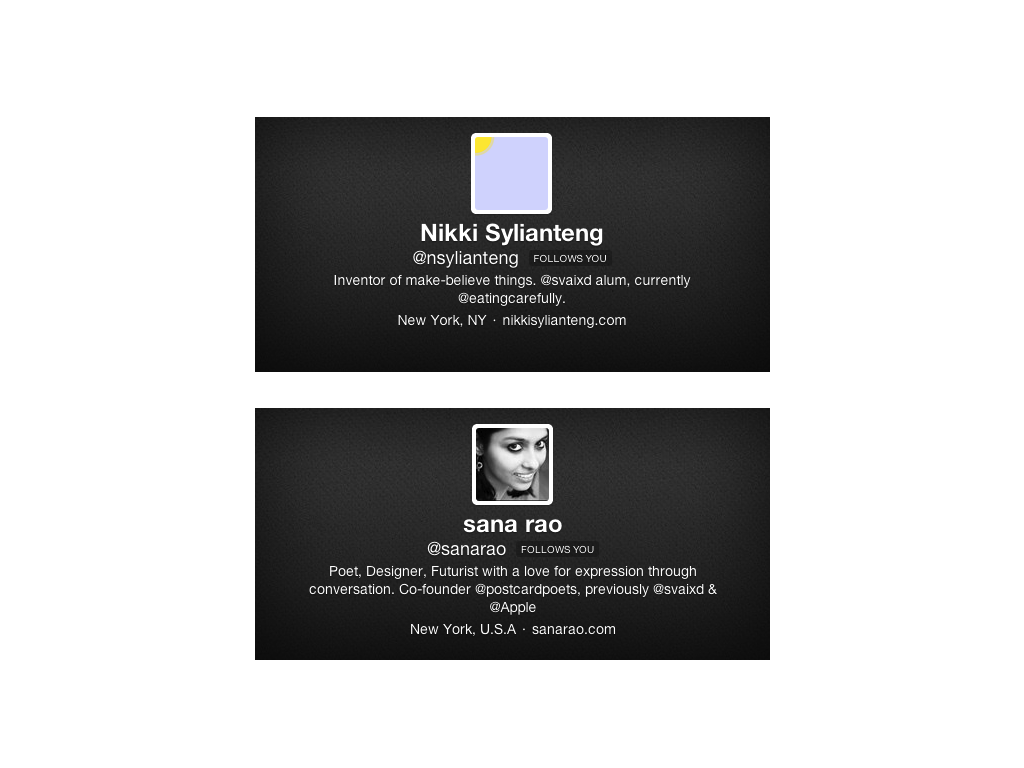
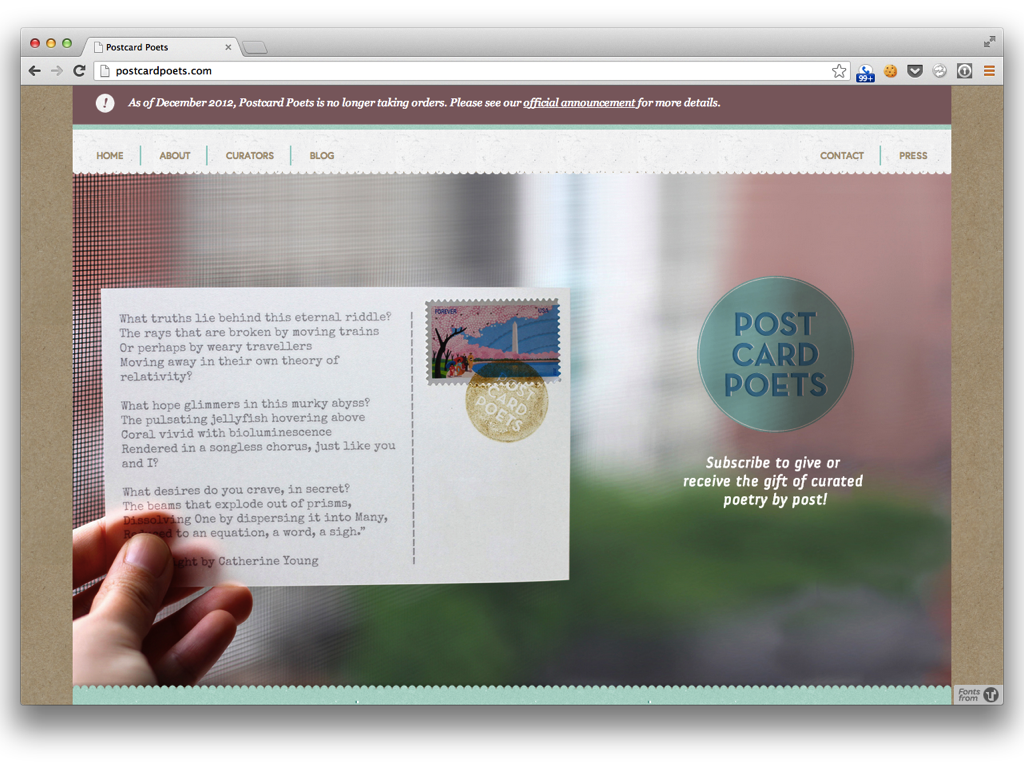
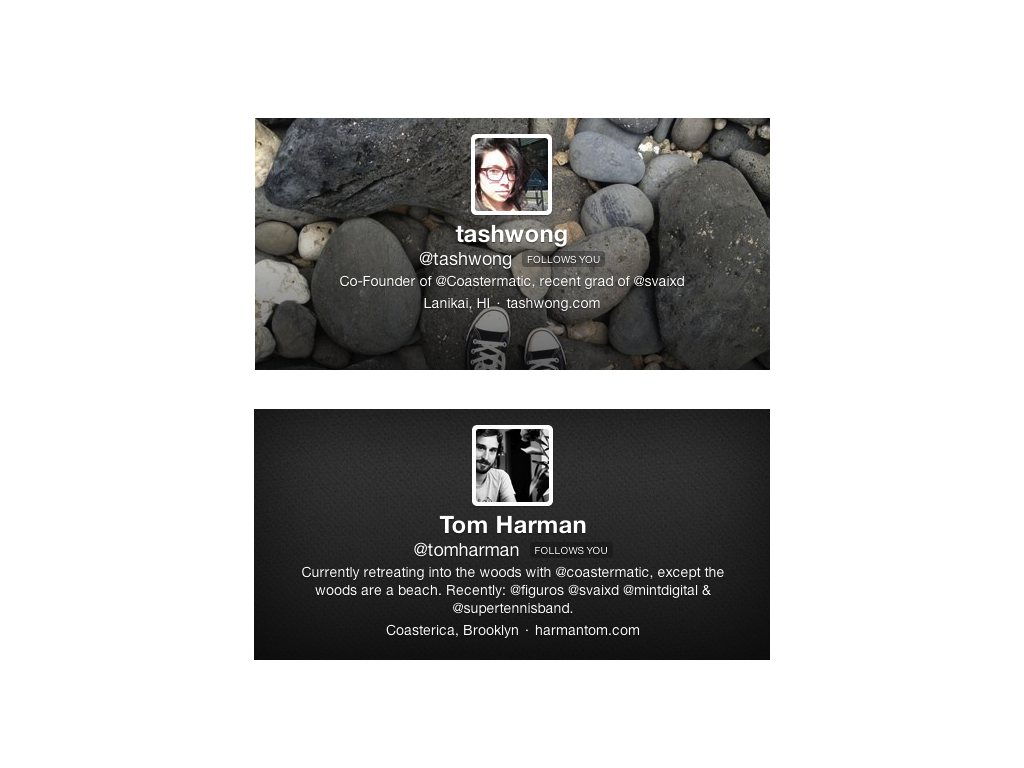
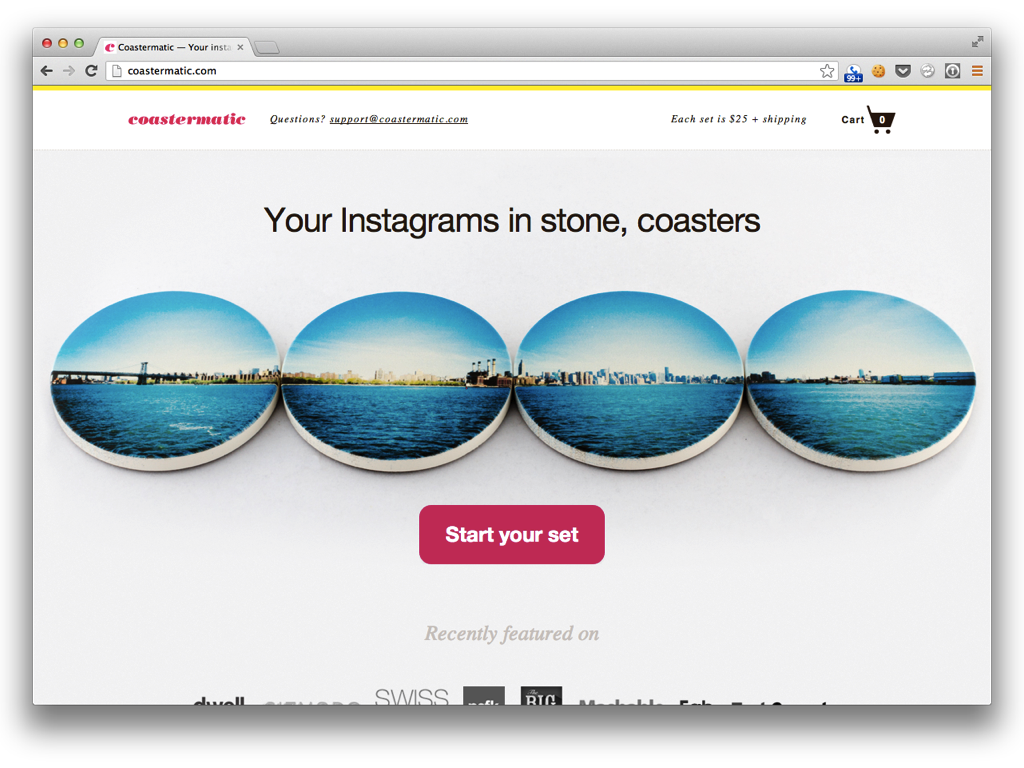
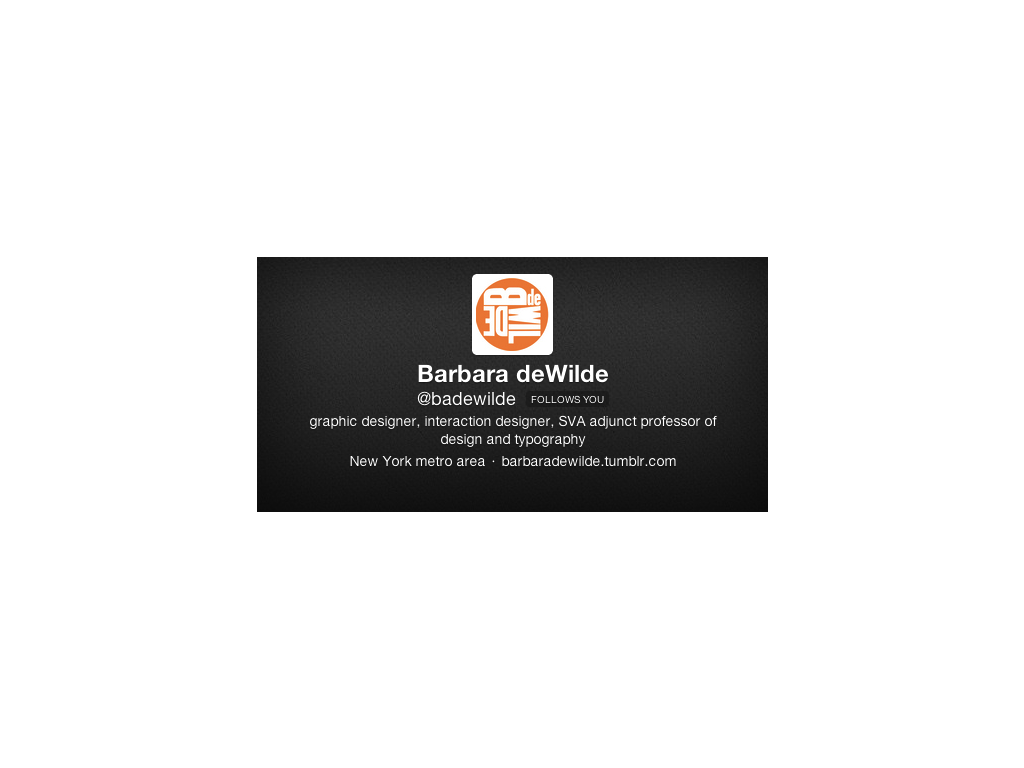
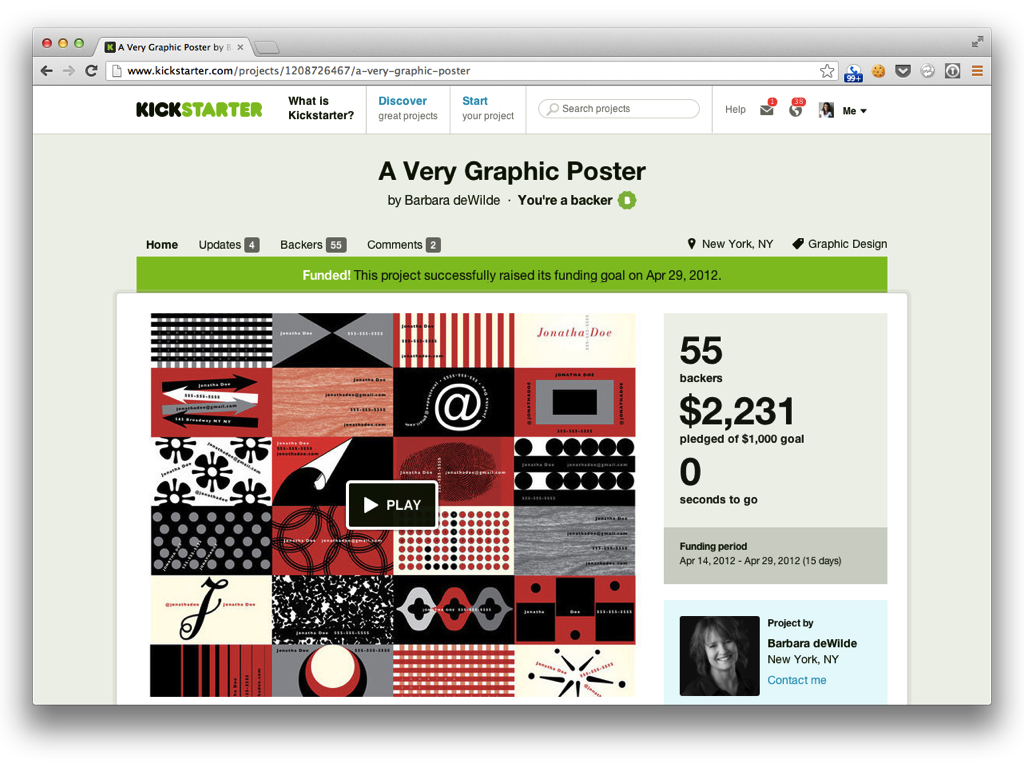
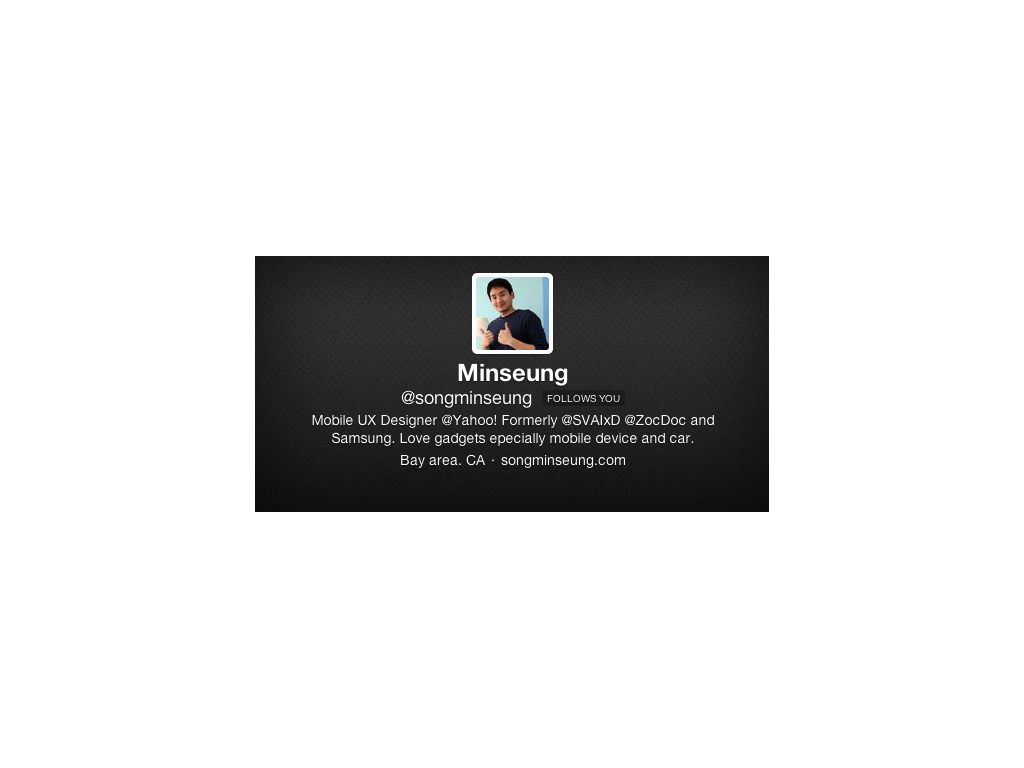
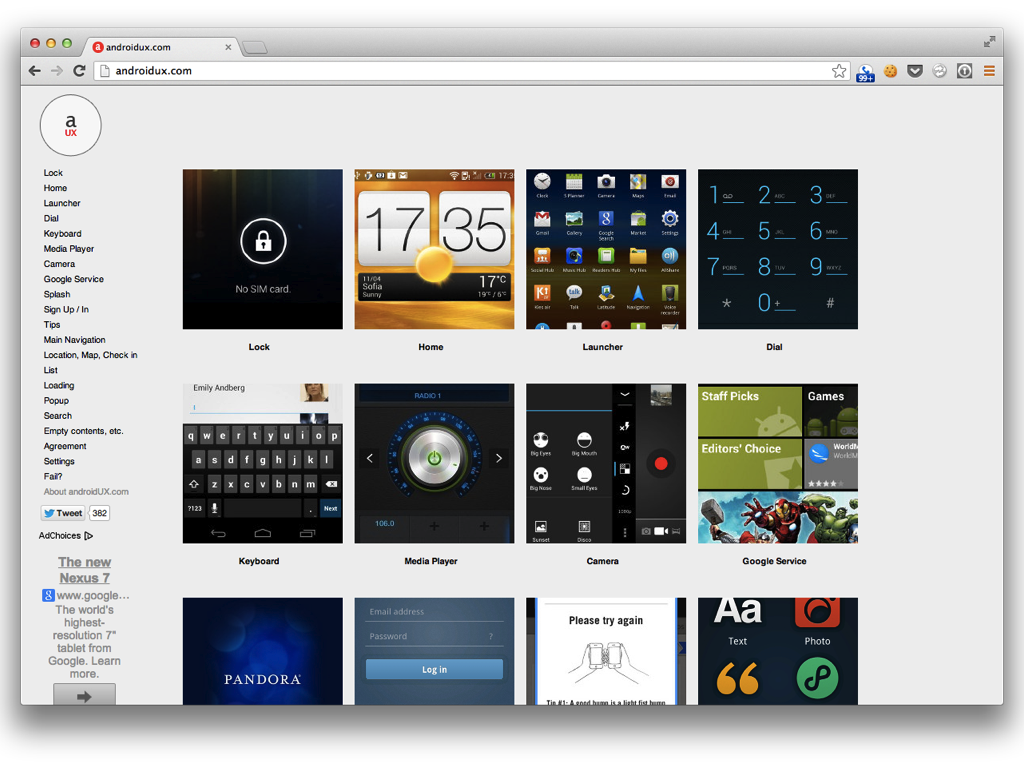
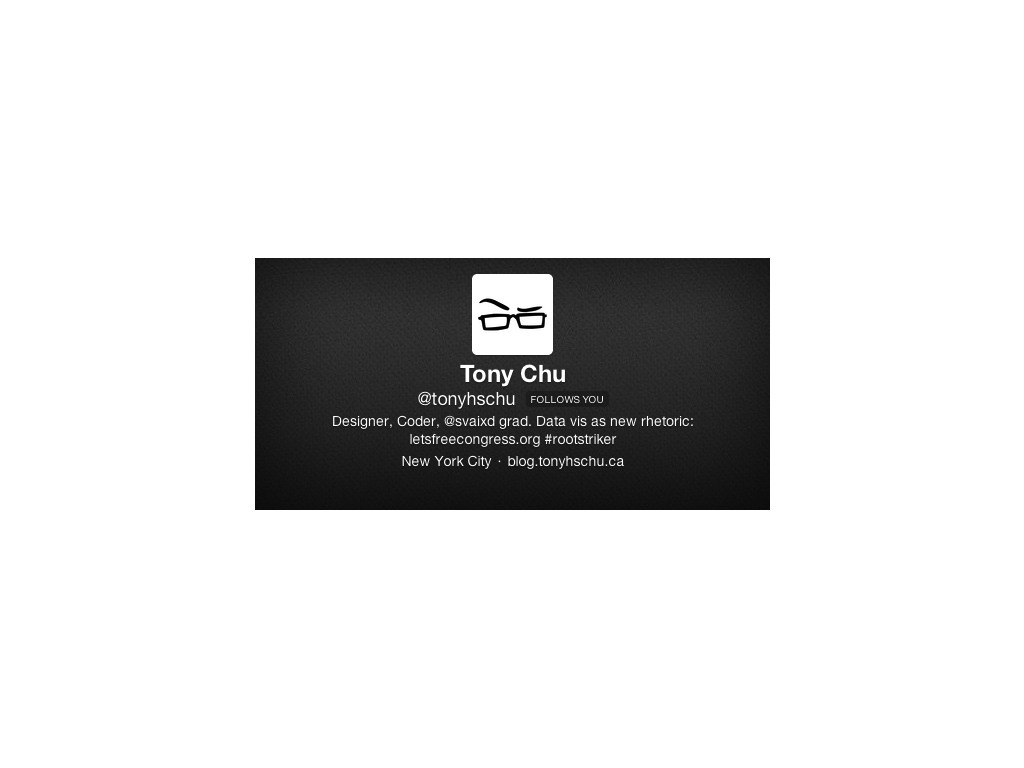
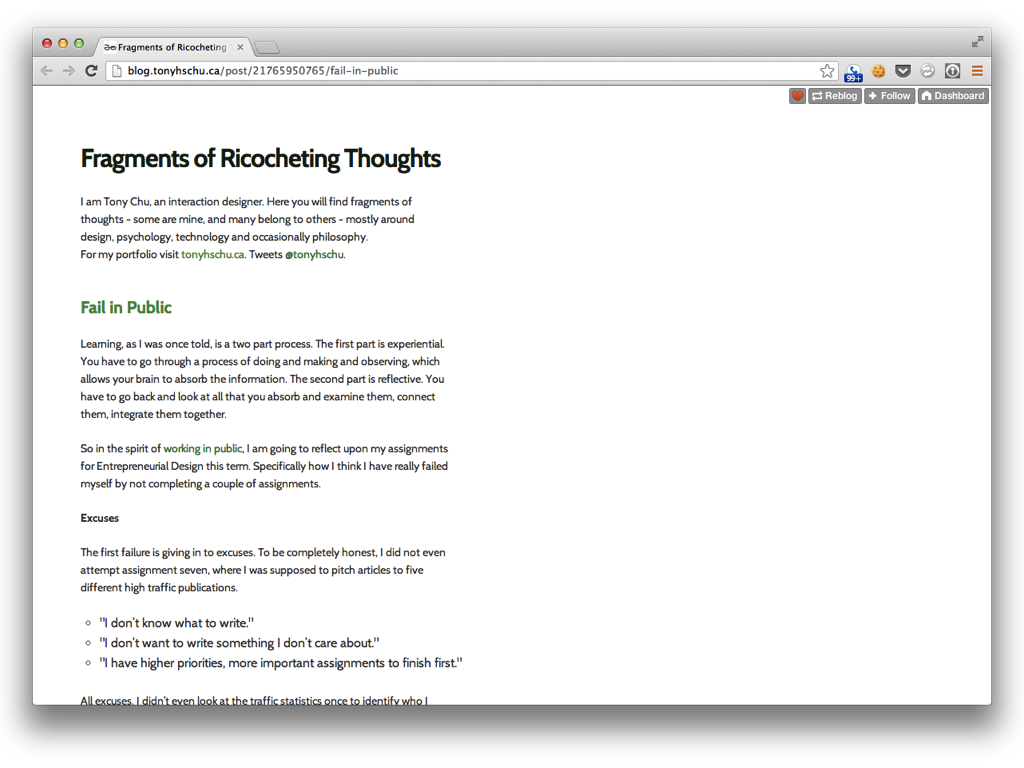
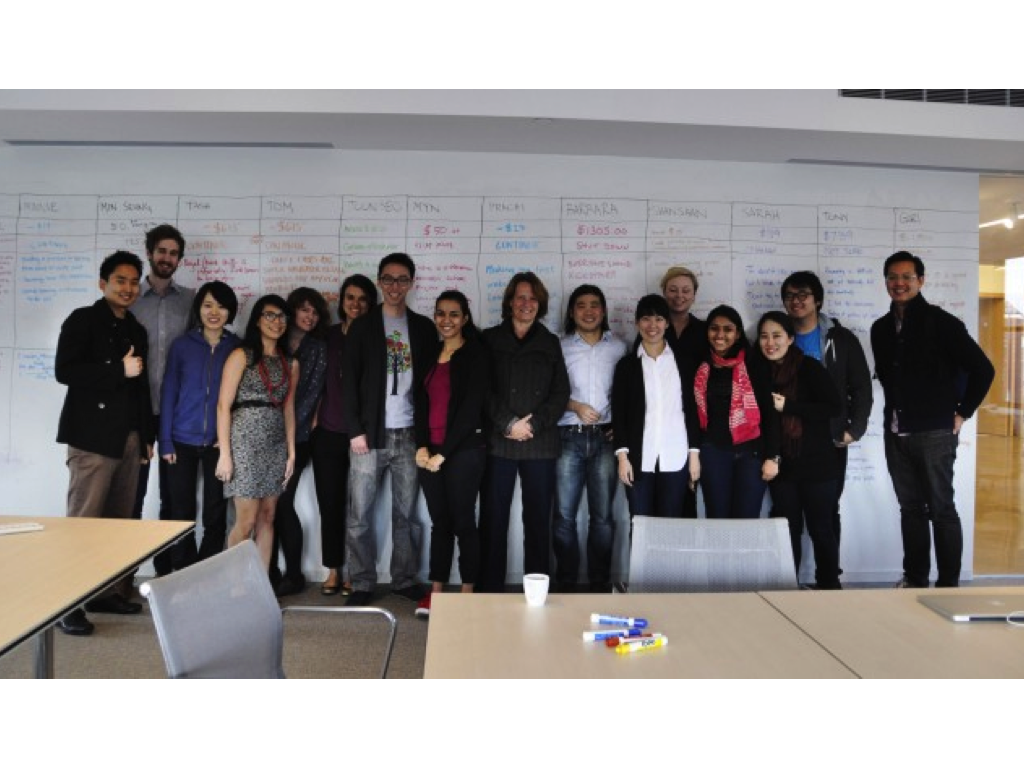
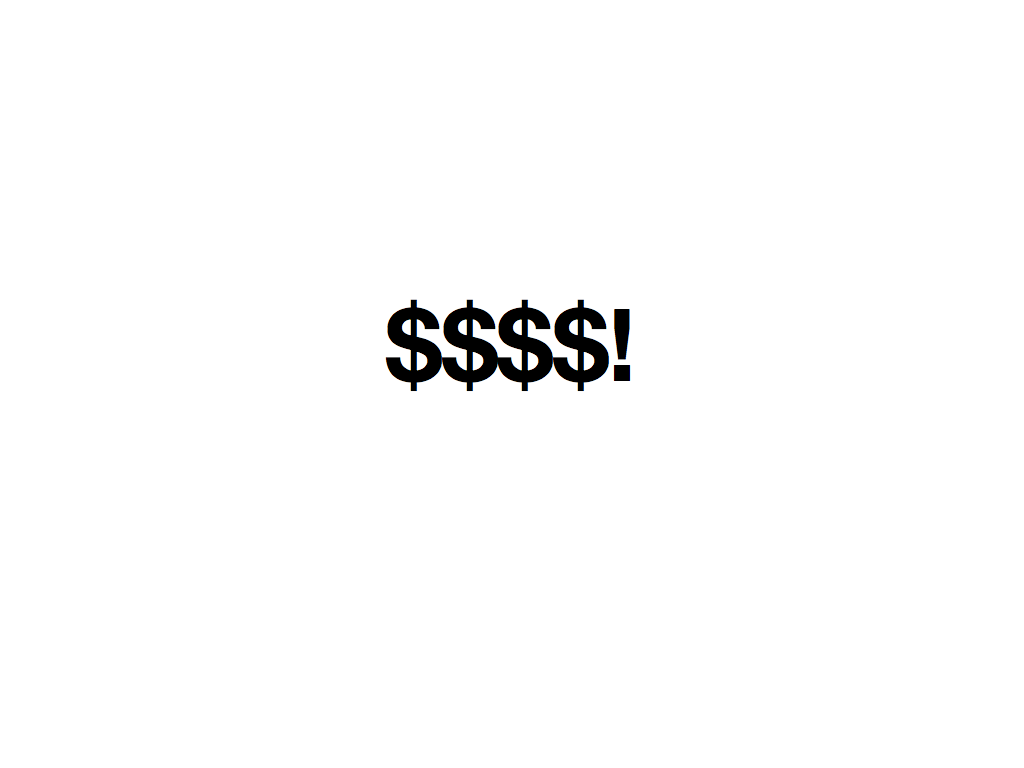
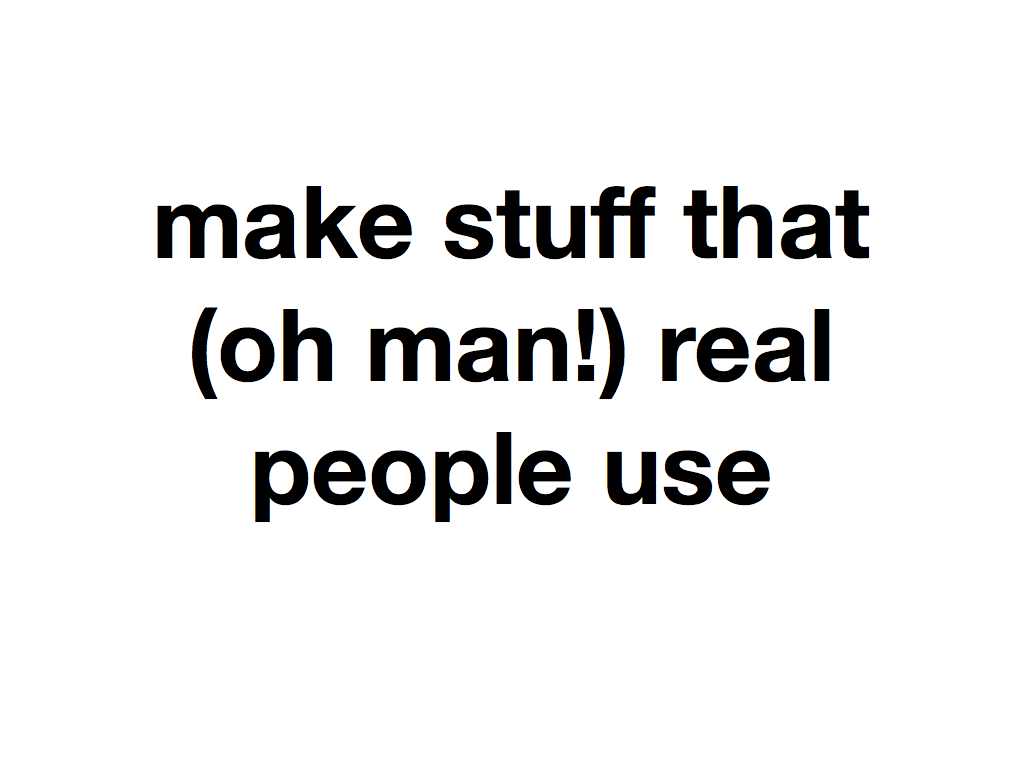
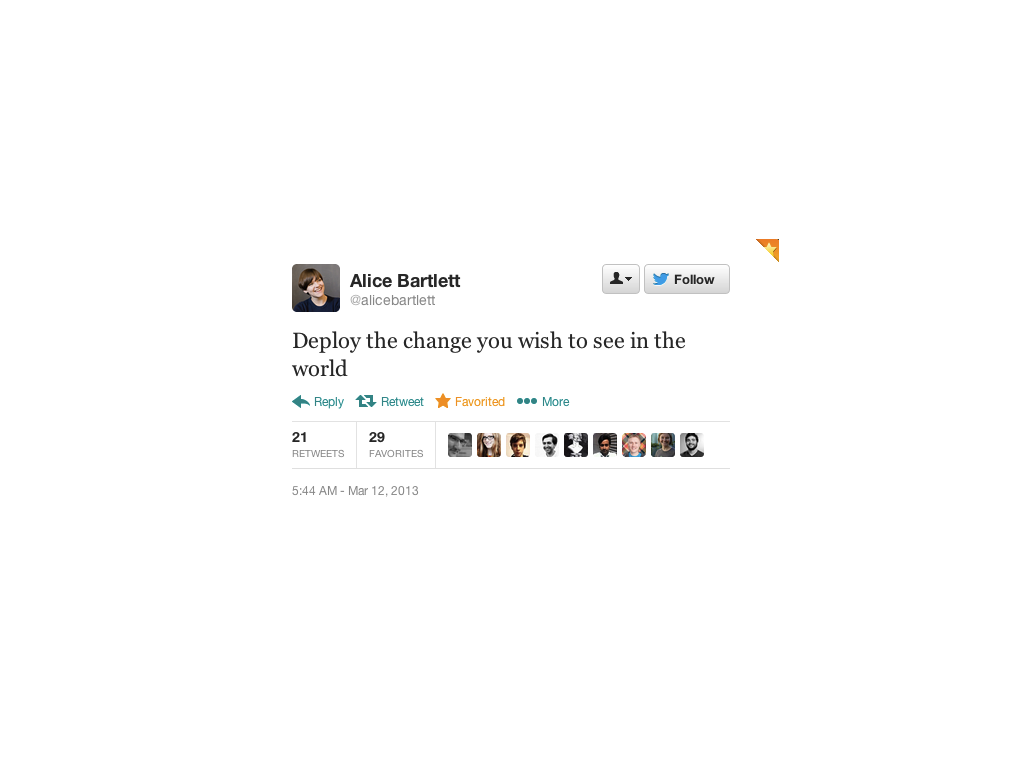


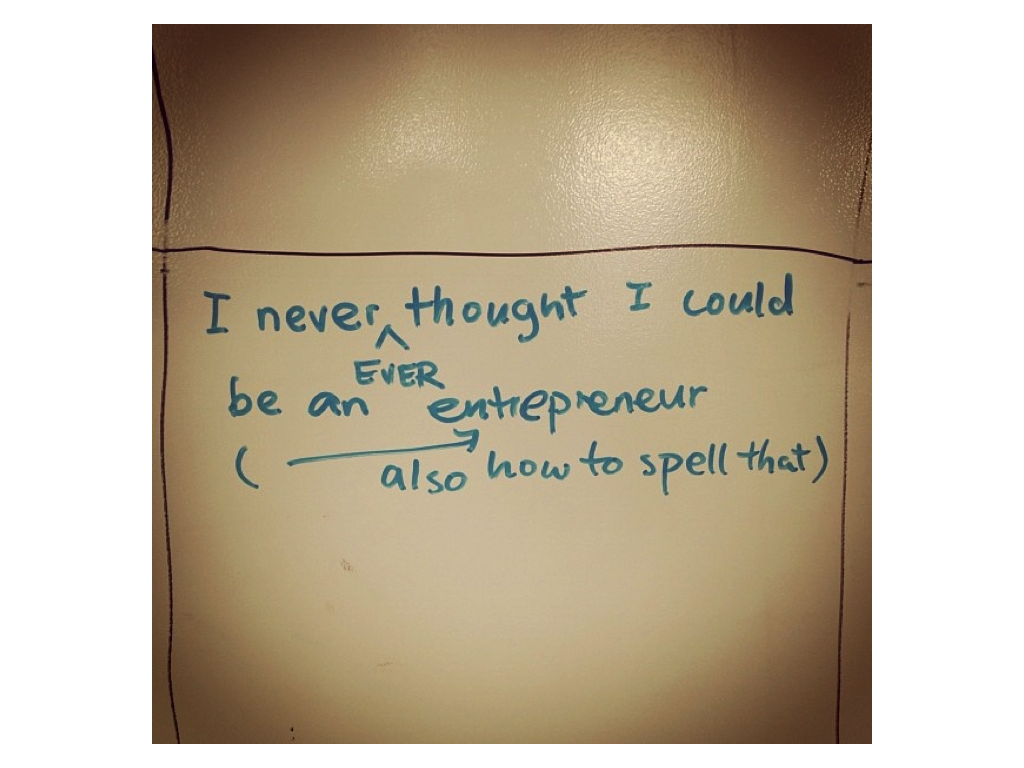
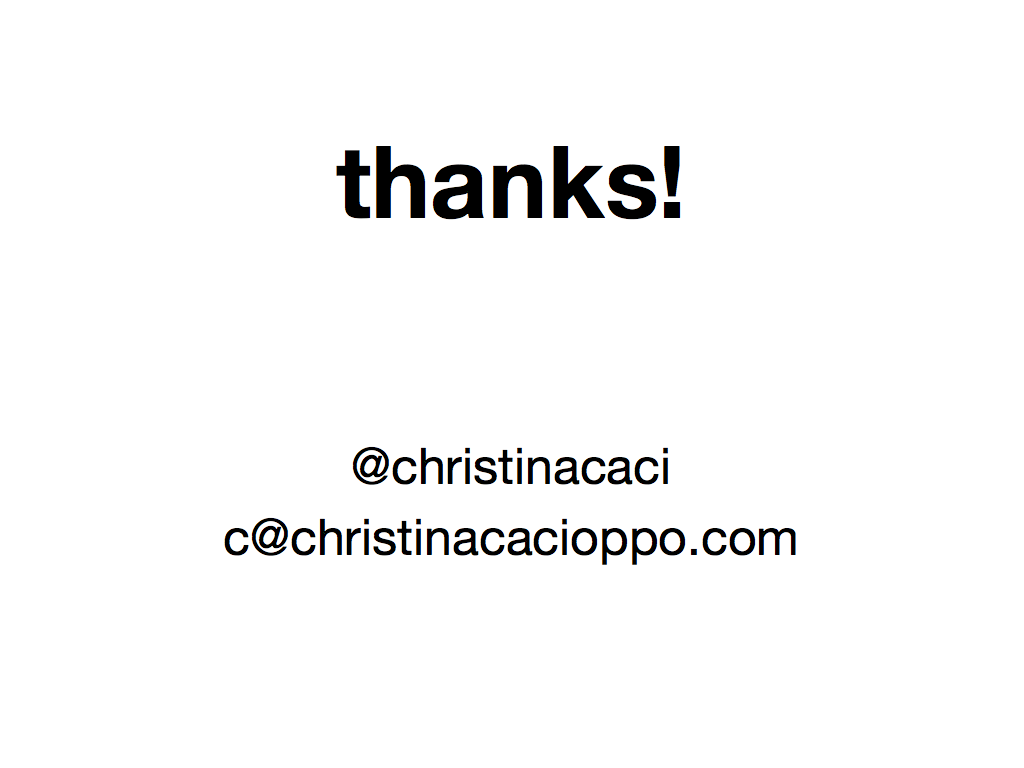

|
Hi! I'm Christina. I'm here today to talk about a class I co-taught at SVA, a desgin school in New York City. The thirteen students ranged in age from mid-20s to mid-50s, so older than you all. But like you're doing here, they were also beginning to build their own projects on the web. So I think and hope some of what I learned while teaching them will extend to you all, too, now that you're learning to make your own things. But before I talk about the class, two questions for you all: |

|
How many of you all think of yourselves as entrepreneurs? [During the presentation, one girl in the group of ~15 raised her hand. Halfway.] |

|
Do you think you can you teach someone to be an entrepreneur? [No hands.] |

|
We were trying to teach entrepreneurship, and we tried to do it in the open by having students record their process on Twitter, Tumblr, and blogs. It was a little awkward at first, but it worked. (More about that in a moment.) The idea was that putting work "out there" — talking about what you're working on before it's done, seeing how people use (or don't use) what you're making, communicating with early adopters — meant students would get more feedback from more people, and that meant they would figure out what worked and what didn't faster. |

|
The over-arching goal was to teach the students — most of whom decidedly didn't think of themselves as entrepreneurs — to be entrepreneurs. We didn't particularly mind if no one pursued a business after the course ended, but we wanted the students to consider it possible to do so. The class's assignments centered on the idea that becoming an entrepreneur requires a decision to become an entrepreneur. This isn't a tautology so much as recognition that the hurdles of starting something are largely psychological, not practical. Since the best way to do things is often to do them, the students had to start businesses in the class. The final assignment was earning $1,000 on the internet in a scalable way. It didn't require incorporation, paperwork, or a business plan; just $1,000. We chose $1,000 because it's roughly a twenty-something's monthly rent in New York City; it's also decent proof you're offering something the market wants. And since going paycheck-less is one of the scariest parts of starting something new, we figured that barrier should be attacked early. |

|
It also seemed meeting people who'd started businesses was a good way to demystify entrepreneurship. So we hosted speakers who'd started businesses: a designer who decided to start printing pretty, design-y temporary tattoos after getting fed up with how ugly her son's temporary tattoos were; a law student who started a funny blog that morphed into a book deal and apps and a profitable website; another designer who left a plum job to start a design agency, decided to take an even more coveted job, and then quit to try his hand at starting a company. That was the class. As for how it turned out — well, I'd like to introduce you to a few students and their businesses: |

|
Guri Venstad, who came to New York from Norway for grad school. She thought of her $1,000 project while having breakfast; it wasn't what she was eating, but what she wasn't eating: a type of hard cheese she ate every morning in Norway. She missed that cheese, and that apparently got her thinking about the link between cheeses and countries. |

|
And then she had the idea to carve countries from cheese: Switzerland from Emmentaler, France from Brie, onward. She then took photos of her country-shaped cheeses and sold them as posters on Kickstarter. The project attracted nearly $2,800 from almost 100 people. (Yeah: 100 people bought a picture of a piece of cheese shaped like a country. I was one of them, and the poster's still on my wall.) The really amazing thing about Guri's project is that she was able to find a bunch of people on the internet who were obsessed with cheese — or who were at least obsessed with the idea of cheese and country-shaped cheeses. They lived all over the world, and she never would have been able to find them without the internet, and she wouldn't have found them as easily without Kickstarter. (A few of them even sent her one of those foam cheese hats from Wisconsin!) |

|
Nikki Sylianteng and Sana Rao came to SVA from the Philippines and India respectively. Together they started Postcard Poets, a subscription service that mailed you, or someone you love, an original poem printed on a vellum-paper postcard. Postcard Poets was their fifth or sixth project after a few false starts; it's not like they knew exactly what they would make up front. (Few people do, I think.) |

|
As Postcard Poets launched, spring semester was ending, and Sana was interviewing with Apple for a summer internship. She got the job and spent the summer in Cupertino. The Apple designer who recruited her later said that it was Postcard Poets that convinced him she could do the work Apple wanted. |

|
Tash Wong and Tom Harman started Coastermatic, which prints Instagram photos on stone coasters; Tash grew up between New Zealand and Hawaii, and Tom's British. They were the two in the class who most wanted to Start a Business. (Most of the others were pretty skeptical about the entire idea.) Coastermatic became their business. Neither had connections to coaster production or stone printing; instead, they pinpointed coasters as a market ripe for disruption — but actually! Most coasters are pretty boring. |

|
The pair googled "custom coaster supplier" (or something similar), found a factory in Oklahoma that'd transfer Photoshop files onto stone coasters, which they'd then pack and ship, and Coastermatic was on its way. Coastermatic's still around, and they now offer coasters with original photography too; their first product is a really gorgeous four-coaster set of the Manhattan skyline. |

|
Barbara deWilde, who was the closest the class had to a native New Yorker, pre-sold a gorgeous poster she designed. She's a graphic designer by training — a very good, very accomplished one — and one of the most impressive things about her was her willingness to forgo graphic design to learn interaction design. She didn't have to; she's had successes and has opportunity in the graphic design world, but she realized they weren't the sorts of opportunities she wanted. |

|
In determining her $1000 project, she hesitated about how much graphic design to incorporate ("I'm supposed to be doing something new, but I really really like this old thing") and eventually went for a Kickstarter project, pre-selling a poster that celebrated different styles of graphic design. Unsurprisingly, it was hugely successful. |

|
Minseung Song, who used to work for Samsung in Korea and cares tremendously about Android app design. Many designers don't praise Android, but Minseung does. |

|
He bought the domain androidux.com ages ago, and on it he launched a library of Android app screenshots to help other designers. He did the initial work himself — taking and adding screenshots one by one — but now, the site's sufficiently popular that people send him screenshots too. (I'm working on an Android app now, and I use the site constantly. I've also sent him a few screenshots, too.) I think he's also got a record in the class, as the site helped him close not one but two job offers. |

|
And lest you think everyone succeeded: well, that's just not true. Only two earned $1000 during the semester, and only ten launched something. One of the students who didn't make $1000 was Tony Chu. Tony's an engineer-turned-interaction designer, and he decided to teach Skillshare classes about basic HTML and CSS typography to graphic designers. |

|
He put together a class and taught it a few times, though each time, he found it harder to promote: how could he get new people in the class, and how comfortable did he feel leaning on people he knew and respected to promote it? Tony stopped teaching after a few classes and $700. He'd had enough. And then he wrote a really introspective blog post about that decision a few weeks later. |

|
So here's the class on the last day. They were tired and happy-seeming (at least some of them.) What'd they get out of it? |

|
Most obviously, money; some of them earned hundreds of dollars, even when production costs (poster-printing, shipping, etc.) were netted out. The ten students who launched something also learned something about themselves and gained, to varying degrees, the sense that they could pull this off again if they wanted to; it'd be a ton of work, as all new things are, but it'd also be possible. |

|
Second, the realization that they can make things. And not just anything, but stuff that oh man! Real people use. And hopefully you all have already experienced that or will experience it soon: that unbelievable feeling when you see someone using something you made. Even — or maybe especially — if that person is your mom. |

|
This is why I like the program you're all going through so much. It's set up for you to learn at least the beginning steps of how you can make something you want and something other people might want too. That's one of the super-cool things about learning to code: it lets you make things you want, and (with some hyperbole) it lets you deploy the change you want to see in the world. (I don't even know @alicebartlett, the person who tweeted this, but I love the line.) |

|
So back to the original question: can you teach someone to be an entrepreneur? I'd like to think the answer is yes, and I think I've got some justification for believing that, beyond wanting to have this class, and all the work that went into it, have been successful. |

|
Here's the class on the last day again. On the whiteboard in the back, everyone wrote down what they learned, what surprised them, and how much money they'd made. One of my favorite squares was Minnie's; her project didn't make any money, but she nearly started a business, which was closer than she'd ever been to starting a business. |

|
Here's what she found most surprising: "I never ever thought I could be an entrepreneur (also how to spell that.)" This past spring — a year after the entrepreneurial design class — Minnie helped a friend start a jewelry-sales business on Facebook and Etsy. |

|
Thanks! |
Thanks to David Boylan, Minnie Choi, Gary Chou, Tony Chu, Patrick Collison, Liz Danzico, Barbara deWilde, Tom Harman, Hannah Ma, Sana Rao, Minseung Song, Matt Spitz, Nikki Sylianteng, Guri Venstad, and Tash Wong for reading drafts.